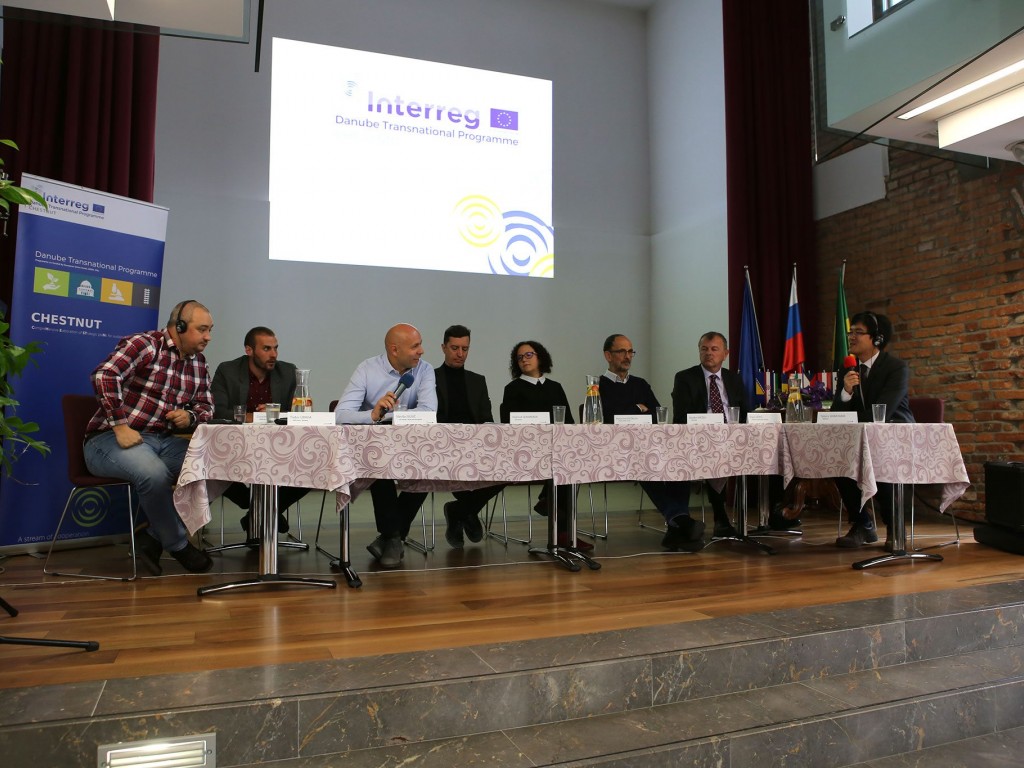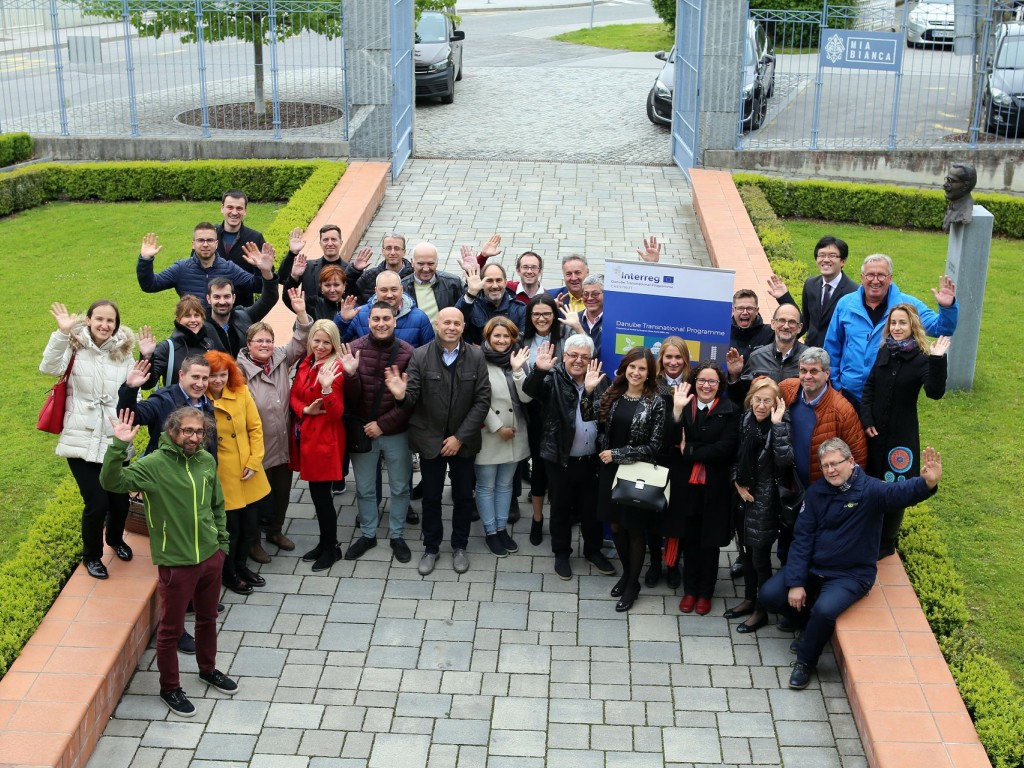CHESTNUT - Sustainable urban mobility: We are on a good path, but there’s still a lot of work to be done
15-05-2019


With pilot actions implemented, Sustainable urban mobility plans drafted and most of the activities concluded, CHESTNUT partners gathered at the final project conference in Velenje, Slovenia. Besides using the opportunity, to gain greater visibility of the project results, partners discussed the plans for the future.
- I have to say that I’ve participated in the creation of many strategic plans, and just a few of them made sense, but the SUMP we created through the project already started to live a life of its own. Many of the measures we suggested are being accepted in Banja Luka, many of them require no, or little money, and it makes me happy to see that they will continue to produce effects even after the project finishes - said Slaviša Jelišić, from Banja Luka development organization LIR Evolution.
SUMP as a living document
Banja Luka is one of the 12 partners who created the Sustainable urban mobility plan, as one of the project activities. It is a document that is helping functional urban areas achieve desired traffic outcomes.
- Classical transport planning is shifting towards sustainable urban mobility planning. In classical transport planning we have a “magic” circle that starts with a problem - increase of cars, which leads to congestion, and as an answer, cities are planning/building more roads, which in the short term lead to ease of congestion, but then we have more cars appearing, we get more traffic and the circle starts from the start. That’s why we need to define desired outcomes, start from there and plan accordingly - summarized the need for sustainable urban mobility planning Takeru Shibayama from Vienna University of Technology, and explained the process partners used to draft each of the 12 SUMPs.
- We started from the extensive analysis of the status quo, collected data in each of the functional urban areas, and agreed upon a vision - our overarching goal. Then we set outcomes - priorities and targets we set out to reach, listed inputs, and available resources. To unify all that work we used a common template for data collection and guidelines for analysis, we organized joint learning actions, and all of those activities resulted in SUMPs we have today - concluded Shibayama.


Great acceptance of the pilot projects at the local level
Some of the pilot actions were presented to the conference participants in the video created by the Dubrovnik development agency DURA, partner in project responsible for communications, and some of them were presented by the partners themselves at the conference.
- As a pilot action of the project Chestnut, we started the city e-bike sharing system in Dimitrovgrad. The system is widely accepted and we are collecting extensive usage statistics that will help us shape our future actions towards creating a favorable environment for further development of sustainable mobility in our city. Good response of the Dimitrovgrad citizens prompted us to upgrade e-bike system with three extra electric tricycles - said Yasho Minkov, representative of the City of Dimitrovgrad, Bulgaria.
Chestnut is just one of the projects in the sustainable mobility puzzle the Municipality of Weiz (Austria) is using to create one of the best examples of a truly mobile community.
- Cargo bikes we procured thought the project Chestnut will become a part of our intermodal mobility network that consists of e-cars, e-bikes, e-scooters, all of which are available to the citizens of Weiz. In the future, we are hoping to construct mobility hubs where it will be possible to switch between the different sustainable models of commuting or getting around the city. We are hoping to eliminate the need for cars, and our goal is the reduction of individual car driving by 20% until 2021. It is a bit optimistic, but we are working with our neighboring municipalities and I sincerely hope we’ll be able to move together really close to that goal - said Barbara Kulmer from Municipality of Weiz.


Priorities are shifting towards sustainable mobility
As one of the biggest cities in the Danube region, Budapest had its share in the project Chestnut. Closing a road for traffic and opening it for cultural and social events proved to be a really interesting intervention of the Zuglo district.
All of the strategic documents, pilot actions, study visits, and other project activities resulted in better connected and interoperable areas throughout the Danube region.
- I have to congratulate you on your work, and the results you achieved. In the future we need more projects that are narrowing the gap between the cities of the region, and I’m sure there be funding available for such projects - said Franc Žepić, from Slovenian Ministry of Infrastructure, and stressed that from the top level there is a dilemma of priorities, because they feel the need for providing support for widest range of transport services, but the shift is slowly moving towards more sustainable ways of transport. Because the situation is complex it will take a bit longer for the results to appear, but we are all on a good path.
